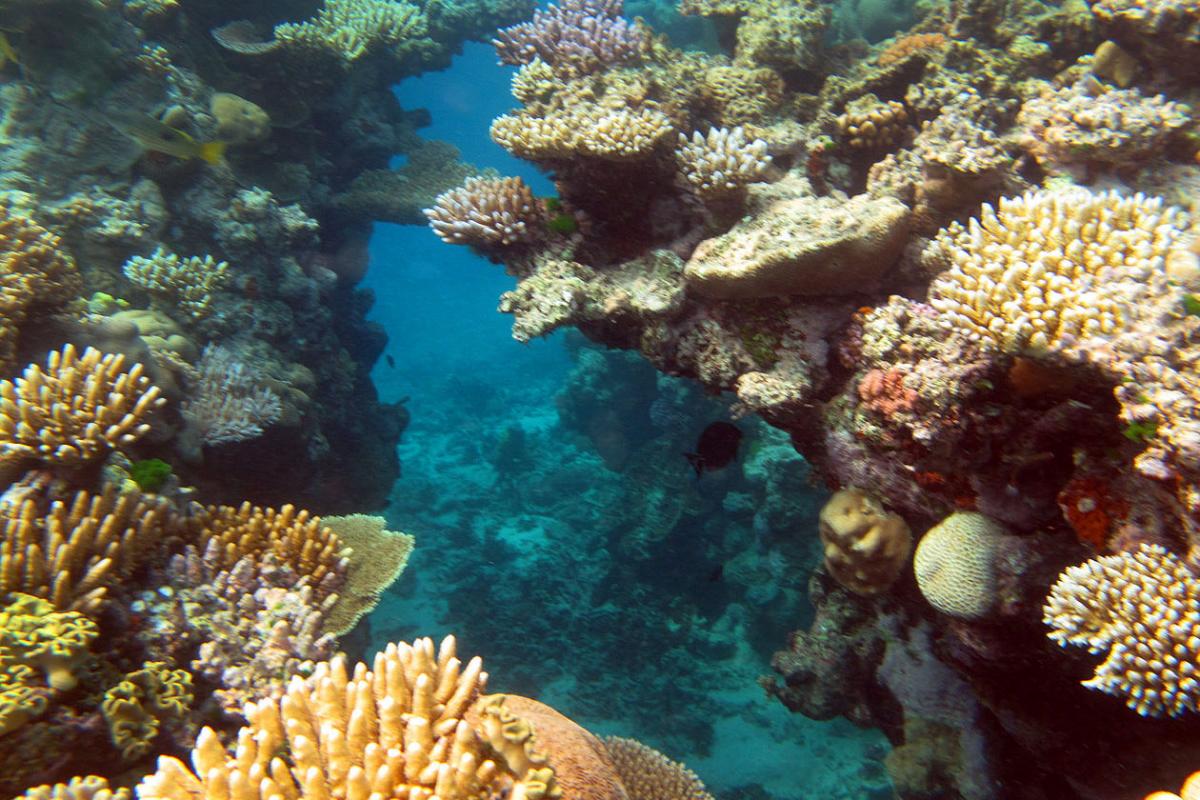Y: Don, I’m worried about Australia’s Great Barrier reef. It may be dying.
D: As I remember, the Great Barrier reef is that gigantic coral reef off the coast of Queensland, Australia.
Y: Yes, this reef is the largest biological structure on Earth, and covers one hundred and thirty thousand square miles. It was built by communities of tiny creatures called polyps. Polyps are strange animals related to jellyfish. Like plants, they anchor themselves in one place. They protect and support themselves by secreting a hard outer skeleton of calcium carbonate. Together, a colony of polyps can build huge complicated structures. That’s what a reef is. Coral reefs provide a shelter and a habitat for many other species.
D: OK, but what makes you say the coral reef is dying?
Y: During the southern hemisphere summer of 2020 the ocean around the reef reached record high temperatures, and the reef exhibited the worst bleaching that researchers have ever observed. Polyps ordinarily live in a symbiotic relationship with colorful algae. Bleaching happens when warm water causes the algae to secrete toxins, and the polyps expel them. This can cause the polyps to die.
D: But if the unusual heat is just a freak occurrence, the reef will recover.
Y: It’s not. Scientists first observed mass bleaching of the corals in 1998, during what was then a record heat wave. Since then, the heat waves, and the bleaching have been happening with increasing frequency, with major bleaching events observed in 2016 and 2017.
D: Could all this be due to human-caused global climate change?
Y: Yes, that’s what scientists think. Climate change is wreaking havoc with vital ecosystems throughout the world.










